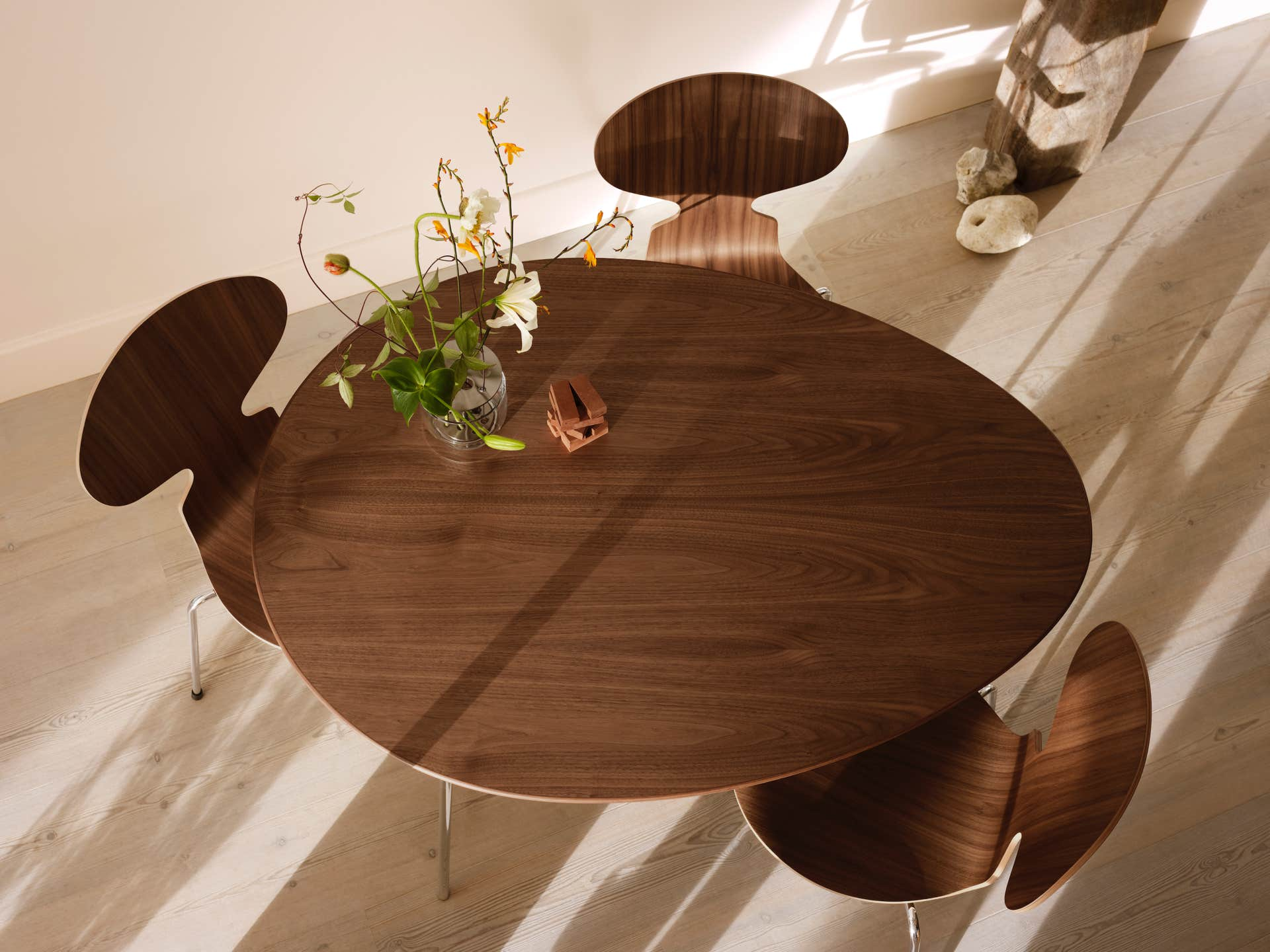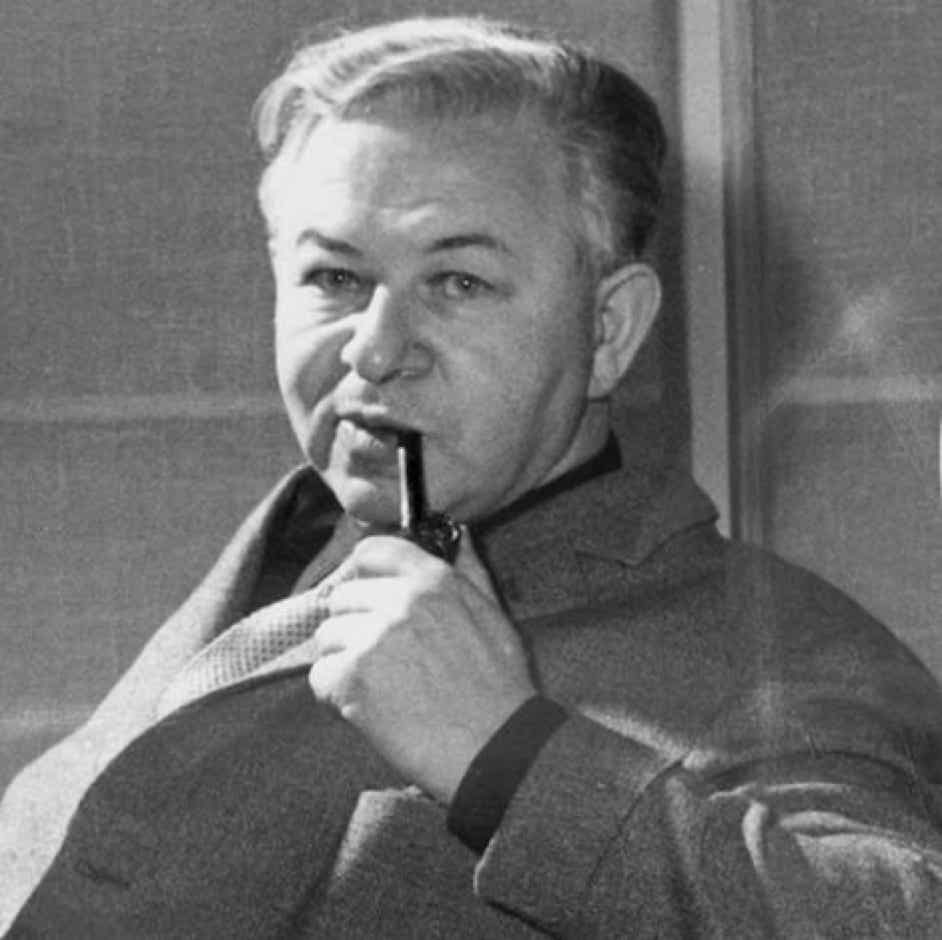
In 1952, the Ant Chair designed by Arne Jacobsen was chosen to furbish the canteen of the new Novo Nordisk company headquarters. At the same time, Jacobsen designed a small egg-shaped table that was perfectly fitting the chair – the Egg Table, light and elegant, with an original ovoid shape tabletop.
The Egg Table marked the birth of a new type of table, compact and casual, corresponding to the birth of a new comfort standard with more comfortable kitchens where people were now used to eating. The Table Egg remained in production until 1960.
Originally, the Egg Table was made with a top covered with a teak or rosewood veneer. This new edition features a walnut veneer, which is the wood most similar to the original version that it is possible today to produce while respecting contemporary criteria of sustainability and ecology.
The egg shape allows the table to accommodate three people in a very friendly way, such as 3 adults or a couple and a child. No one opposes or directly faces each other, favoring the creation of a natural and relaxed atmosphere.
Dimensions 115 x 84 x H74 cm
Materials 75% wood, 25% steel
Warranty Fritz Hansen offers a 10-year warranty after registering your furniture on fritzhansen.com/my-fh
Egg Table

Arne Jacobsen né le 11 février 1902 à Copenhague. Son père, Johan Jacobsen, est un négociant en gros d'épingles de sûreté et de boutons-pression. Sa mère, Pouline Jacobsen, commis de banque, aime peindre des fleurs dans son temps libres. La famille vit dans une maison typiquement victorienne, à la décoration très chargée. Par réaction, le jeune Arne repeint toute sa chambre en blanc.
Formation et relations scolaires
Il rencontre les frères Lassen au pensionnat de Nærum. Flemming Lassen deviendra son partenaire dans une série de projets architecturaux. Arne est un élève agité, toujours prêt à faire des farces, se tournant lui-même en dérision. Dès son enfance, il montre un talent extraordinaire de dessinateur et aime représenter la nature de manière très réaliste. Il veut être peintre, mais son père pense que l'architecte est un choix plus judicieux (l'histoire l'en remerciera).
Le goût des voyages
Il commence à voyager à 20 ans : une traversée en bateau jusqu'à New York. Puis c'est l'Allemagne pour apprendre la maçonnerie, et l'Italie pour observer l'architecture. Il y produit certaines de ses plus belles aquarelles, rendant atmosphères et matériaux avec délectation. La curiosité pour l’étranger sera une constante de sa carrière, sans abandonner pour autant le Danemark et ses traditions.
Arne Jacobsen derrière le design
La personnalité de Jacobsen se reflète dans sa production : moderniste pointu, perfectionniste inlassable, mais aussi amoureux de la nature et père de famille jovial : comme lui, son travail est précis et chaleureux, danois et universel, moderne et atemporel.